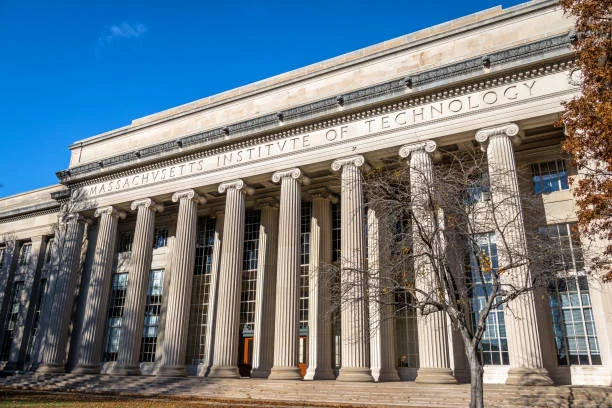
Table of Contents
The Massachusetts Institute of Technology (MIT), situated in Cambridge, Massachusetts, is among the world’s top institutions for science, technology, engineering, and mathematics (STEM) education. Founded in 1861, MIT has remained at the cutting edge of innovation, research, and technological progress. The university is renowned for its world-class engineers, scientists, and entrepreneurs who have made a lasting impact on industries across the globe.
History of Massachusetts Institute of Technology:
MIT was established in 1861 with the mission to drive industrial growth in the United States by way of practical, science-oriented education. The institute gained a fast reputation for rigorous courses and hands-on education. Throughout the years, MIT has widened its reach, making key advancements in areas like computing, artificial intelligence, robotics, and space exploration.
Global Rankings
MIT is ranked consistently among the best universities in the world:
- QS World University Rankings: Often ranked #1 in the world.
- Times Higher Education (THE) World University Rankings: Frequently in the top 5.
- U.S. News & World Report: Consistently ranked as the top engineering and technology school in the U.S.
- These rankings speak to MIT’s academic, research, and innovation excellence.

Academic Programs
MIT is organized into five schools:
School of Engineering – One of the world’s top engineering schools, with programs in aerospace, electrical, mechanical, and more.
- School of Science – Concentrating on physics, chemistry, mathematics, and biology.
- School of Architecture and Planning – A leader in architectural and urban planning education.
- Sloan School of Management – Among the world’s leading business schools.
- School of Humanities, Arts, and Social Sciences – Offering a balanced education in many fields.
MIT encourages interdisciplinary education, enabling students to collaborate on cross-functional projects that combine several fields of study.
Research and Innovation
MIT is synonymous with innovative research and technological developments. Some of the major research areas are:
- Artificial Intelligence and Machine Learning – Hosts the MIT Computer Science and Artificial Intelligence Laboratory (CSAIL).
- Biomedical Engineering and Biotechnology – Advances in medical devices, gene therapy, and neuroscience.
- Renewable Energy and Climate Science – Pioneer research on renewable energy solutions and climate change.
- Space Exploration – Collaborations with NASA and private aerospace firms.
MIT has been instrumental in bringing to life companies like Intel, Dropbox, and iRobot, demonstrating its influence on worldwide innovation.

Student Life
MIT provides a vibrant and cooperative student life experience. Students engage in more than 500 clubs and organizations, representing interests in:
- Academic and professional organizations
- Cultural and identity-based groups
- Performing arts and creative pursuits
- Community service and social activism
The university encourages close camaraderie through its residence system, as students live on campus in theme communities.
Athletics and Extracurricular Activities
MIT is not historically famous for sports, but it does have a vibrant sports culture with 33 varsity sports teams competing at the NCAA Division III level. The university also encourages wellness through intramural and club athletics, such as rowing, fencing, and ultimate frisbee. Also Virtual assistant is becoming most popular job in today’s world. Because its also very popular way to make money online.
Notable Alumni
MIT alumni have some of the most powerful scientists, technologists, businesspeople, and politicians among them, including:
- Technology Pioneers: Tim Berners-Lee (creator of the World Wide Web), Ray Kurzweil (futurist and AI visionary).
- Entrepreneurs: Drew Houston (co-founder of Dropbox), Kofi Annan (former UN Secretary-General).
- Nobel Laureates: More than 90 MIT-affiliated Nobel Prize winners.
- Business Leaders: Benjamin Netanyahu (former Israeli Prime Minister), Sal Khan (founder of Khan Academy). Also, you can earn money with the transcription job because its one of the easy way to make money online.
Scholarships and Financial Aid
MIT is dedicated to affordability with need-based financial aid so that all students can come regardless of their income. Some of the most important features are:
- Need-Blind Admissions: Admission decisions are not affected by financial need.
- Generous Aid Packages: Over 70% of students receive financial aid in some form.
- Zero Cost for Low-Income Families: Families with incomes under $90,000 pay zero tuition. Also, you can earn money with the data entery because its also one of the best online work in industry.
Admission Process
MIT’s admission process is highly selective, with an acceptance rate below 5%. Factors considered include:
- Exceptional academic performance and standardized test scores.
- Passion for STEM and hands-on innovation.
- Strong extracurricular involvement and leadership.
- Personal essays and recommendation letters.
Conclusion
MIT remains a world leader in education, research, and innovation. Its rigorous focus on interdisciplinary education, innovative research, and practical impact makes it one of the most sought-after institutions for future scientists, engineers, and entrepreneurs. As a force driving technological progress, MIT continues to lead the way in shaping the future of industries and societies across the globe.